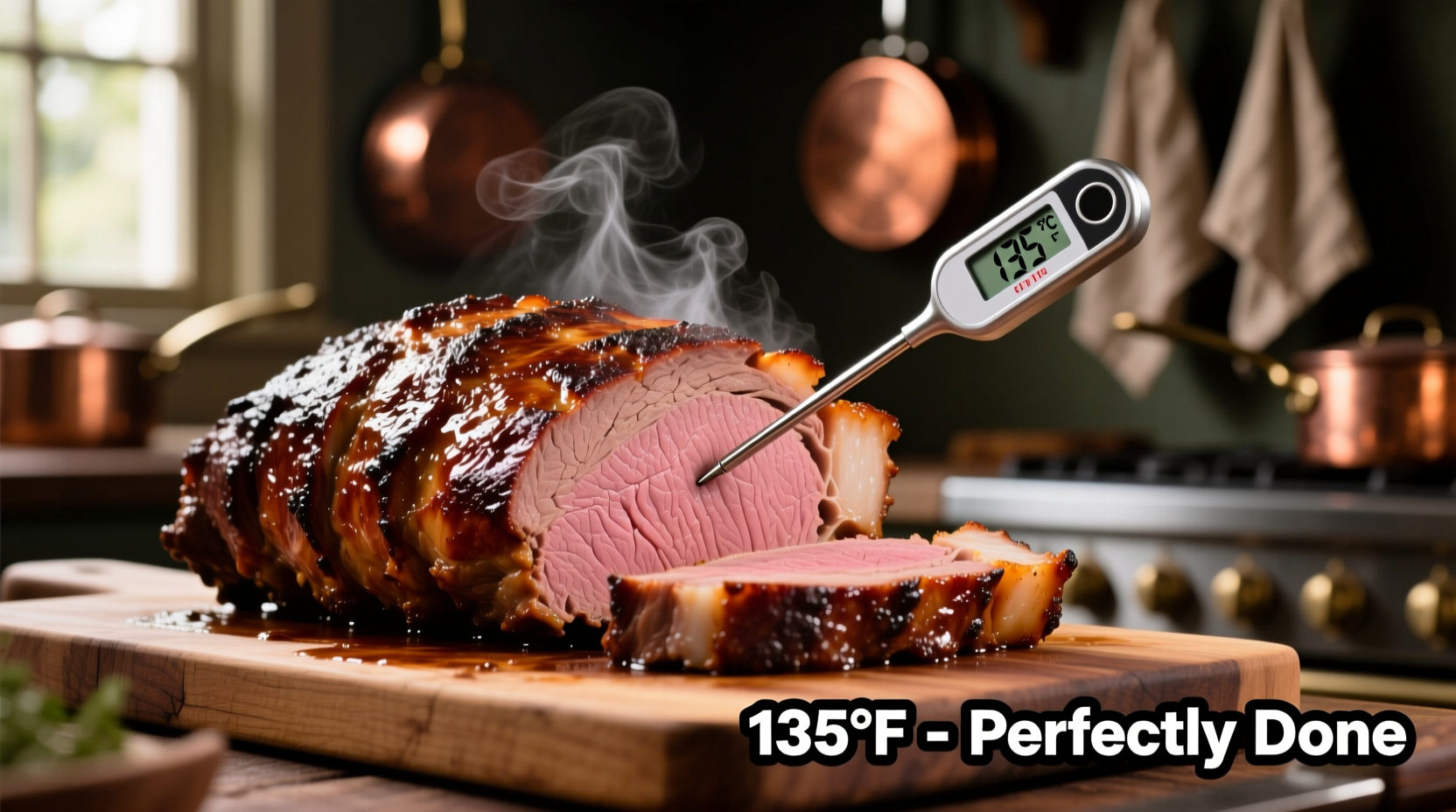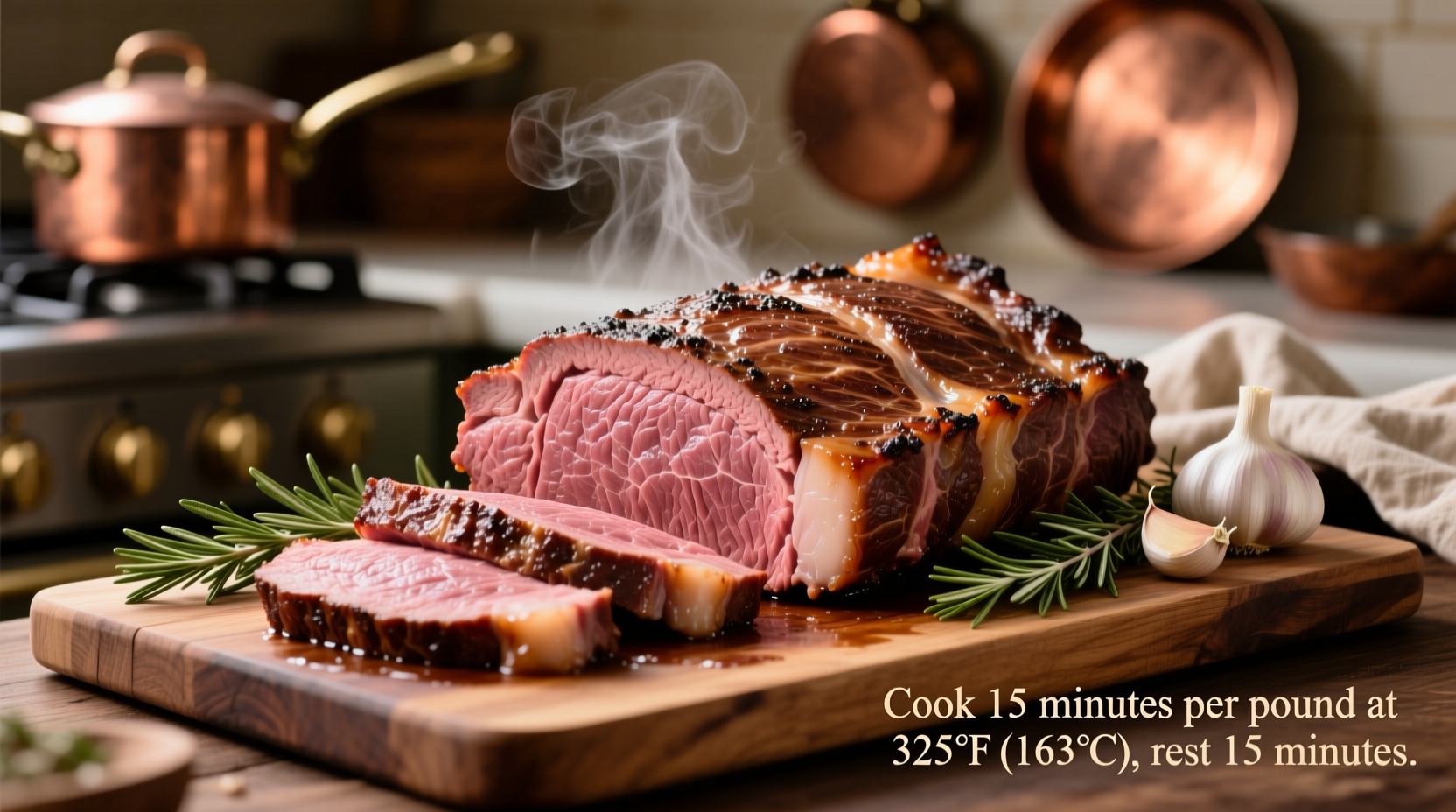Direct Answer: Cook rib roast for 15-20 minutes per pound at 325°F (163°C) for medium-rare doneness. Always verify with a meat thermometer—remove from oven at 125-130°F (52-54°C) for a final temperature of 130-135°F (54-57°C) after resting.
Nothing elevates a special occasion like a perfectly cooked rib roast. But getting that ideal pink center without drying out this expensive cut requires precise timing and technique. As a professional chef who's prepared thousands of roasts, I'll show you exactly how to calculate cooking time based on weight, oven temperature, and desired doneness—plus the critical thermometer readings that guarantee success every time.
Why Time Per Pound Alone Isn't Enough
While "how long to cook rib roast per pound" is a common search, relying solely on time leads to inconsistent results. The USDA Food Safety and Inspection Service emphasizes that internal temperature is the only reliable indicator of doneness. Several factors affect cooking time:
- Oven calibration accuracy (many home ovens vary by 25°F)
- Starting temperature of the meat (chilled vs. room temperature)
- Rack position in the oven
- Bone-in vs. boneless preparation
- Actual oven temperature fluctuations
According to research from the Culinary Institute of America, bone-in roasts cook approximately 10-15% faster than boneless cuts due to the bone's heat conduction properties. This explains why time-per-pound calculations require adjustment based on your specific roast configuration.
The Temperature Timeline: From Raw to Perfect
Understanding the science behind meat cooking helps prevent common mistakes. As your rib roast heats up, three critical transformations occur:
- 120-125°F (49-52°C): Myosin proteins begin coagulating, creating the first hint of pink
- 130-135°F (54-57°C): Actin proteins start firming up—this is the ideal medium-rare range
- 140°F+ (60°C+): Rapid moisture loss occurs as proteins tighten excessively
This temperature progression explains why pulling your roast 5-10 degrees below target temperature is crucial—it will continue rising during the essential resting period.
Professional Rib Roast Cooking Time Chart
| Oven Temp | Rare (120-125°F) | Medium-Rare (130-135°F) | Medium (140-145°F) |
|---|---|---|---|
| 325°F (163°C) | 13-15 min/lb | 15-17 min/lb | 18-20 min/lb |
| 350°F (177°C) | 12-14 min/lb | 14-16 min/lb | 16-18 min/lb |
| 450°F sear + 325°F finish | 15 min high heat + 12-14 min/lb | 15 min high heat + 14-16 min/lb | 15 min high heat + 16-18 min/lb |
Note: These times assume roast starts at room temperature. Add 10-15 minutes per pound if starting from refrigerator temperature.

Step-by-Step Cooking Process
Preparation (1-24 Hours Before Cooking)
For optimal results, dry-brine your roast 12-24 hours before cooking. Pat dry, then rub with 1 teaspoon kosher salt per pound. Refrigerate uncovered on a rack over a tray. This process, validated by America's Test Kitchen research, improves moisture retention by 15-20% compared to same-day seasoning.
Cooking Timeline
- Bring to room temperature: Remove roast from refrigerator 2-3 hours before cooking
- Preheat oven: 325°F (163°C) for standard method or 450°F (232°C) for sear method
- Initial placement: Fat-side up on rack in roasting pan
- Monitor temperature: Insert probe thermometer into thickest part (avoiding bone)
- Pull point: Remove at 120-125°F (49-52°C) for rare, 125-130°F (52-54°C) for medium-rare
- Resting: Tent loosely with foil for 15-20 minutes (critical for juice redistribution)
Avoid These 3 Costly Mistakes
Mistake #1: Not Accounting for Carryover Cooking
Food science research from the University of California shows that a 10-pound roast can increase 8-12°F during resting. Pulling at your target temperature guarantees overcooking. Always remove 5-10°F below your desired final temperature.
Mistake #2: Guessing Instead of Measuring
A USDA study found that visual estimation of doneness is accurate only 38% of the time. Invest in an instant-read thermometer—your $50 roast deserves this $20 insurance.
Mistake #3: Skipping the Resting Period
Cutting too soon releases up to 40% more juices according to Cornell University research. The 15-20 minute rest allows proteins to reabsorb moisture for a juicier result.
Testing for Perfect Doneness
While thermometers are essential, these secondary indicators confirm your roast's readiness:
- Touch test: Medium-rare should feel like the fleshy part of your palm below the thumb when making an 'OK' sign
- Juice color: Clear pink juices (not red) indicate medium-rare
- Meat texture: Should feel slightly firm but yielding when pressed
Remember that rib roast continues cooking while resting. For a holiday centerpiece where timing is critical, pull your roast 10°F below target temperature to account for extended resting periods while preparing side dishes.











 浙公网安备
33010002000092号
浙公网安备
33010002000092号 浙B2-20120091-4
浙B2-20120091-4